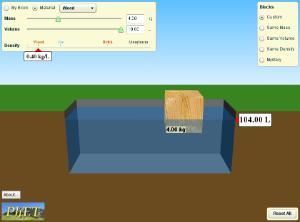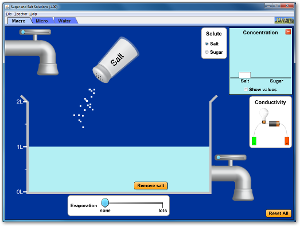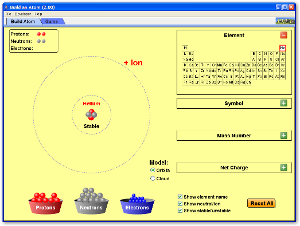
It started with a pink bouncy ball. Eight inches in diameter, sitting in a bird bath in the school courtyard. Standing around it with my class, the girls and I marvel at our feeble representation of the Sun.
"This plastic ball represents the most important force in our solar system, and the reason we have life on our planet," I say, trying to impart a sense of importance to the round pink ball. We stand for a moment and look up at the real sun, letting it warm our faces in the chilly morning air.
"Who has Mercury?" I call out. Behind me, a voice pipes up,
"Here it is!" A student is holding a white index card with a tiny ink dot in the center.
"Alright, Mercury. According to our scale, if the Sun is here, then you are positioned ten paces that way." I point toward a clump of bushes. My little Mercurian princess takes ten large paces away from the Sun, then turns around to face us and holds up her index card proudly. We take a moment to admire how tiny Mercury looks on that index card, and then I lead the group to join her. From our spot at Mercury we look back at the Sun and I ask,
"What kinds of surface temperatures does Mercury have? Who researched Mercury for their planetary brochure last week?" Two girls jump up excitedly and call out, "We did! Mercury has temperatures over 400 degrees Celsius on the side facing the Sun!"
"Wow," I reply. "400 degrees seems really hot. Would you agree?" All the girls nod in agreement. "But look at this tiny dot." I point to the index card."Now look at the Sun way over there. How does Mercury have such high temperatures?" A few girls suggest, "Maybe it's because the planet is so small?" Another one adds, "And maybe because the Sun is soooo hot!" I reply with a simple, "Interesting," and let the suspense build as we continue on our trek.
I call out, "Who has Venus?"
"I do!" one of my students replies happily, holding up a tiny black peppercorn between her fingers.
"Good. Venus, you need to take nine paces from here in order to fit our scale." Venus marches away from us as we count off her paces one at a time. At nine, she stops, turns around and holds up the peppercorn. It is barely visible to us. I ask Mercury to stay put for a few minutes while the rest of us journey on to Venus' position. We stare at the tiny peppercorn, then to the tiny dot of Mercury, and then to the pink ball of the Sun.
"Who has Earth?" I ask.
"Me!" another girl says, holding a second peppercorn carefully between her fingers.
"Okay, Earth. From Venus, you will need to take 7 paces to find your place in the solar system." We excitedly count as she marches away from us, then turns and holds up the peppercorn. The group leaves Venus behind momentarily and joins Earth. I ask everyone to look up at the tiny peppercorn.
"This, girls, is our home. It is life as we know it. On this tiny bit of rock you wake and eat with your family, drive to school, grow and change and learn every day. There are seven billion other humans on this same rock with us." There is a collective silence as I say this, and a few hushed "woahs" pass over the group.
Next I ask, "How far away do you think our moon is from this peppercorn?"
Several girls point with oustretched arms and guess aloud, "About this far?" I tell everyone to hold up their thumb and look carefully at it's length.
"That is about the distance from the Earth to our Moon." After the shock passes through the group, I add, "And that is the farthest human beings have ever physically traveled in a spaceship!"
We look back at Venus and Mercury, whose places didn't, until this very moment, seem so far away at all. The girls are now completely stunned.
While we stand at Earth we reflect on the temperatures on our planet, how they compare to Venus and Mercury, and we even venture to think on how strong the pull of the Sun's gravity must be to hold all these tiny objects in orbits so far away. Little minds are expanding as we discuss these ideas, and in this moment, it seems my science teacher heart has never felt so proud of these girls.
"Where's Mars?" I say loudly now over the commotion.
"Here it is!" and a girl holds up a white index card with an ink dot drawn in the center.
"Alright, Mars. You will need to take fourteen paces to reach your place in the solar system. Let's all count with her as she goes!" Mars takes off marching, and we count excitedly to fourteen. We leave Earth behind for a moment and walk over to the little white index card.
"Look at this tiny dot. Then look back at Earth, then Venus, then Mercury, and then the Sun. These are the inner, rocky planets of our solar system. Who wants to guess how many paces we need to get to the next planet in line, Jupiter?"
The girls blurt out various numbers, ranging from around 10 to 20. I ask the girls who have been modeling Mercury, Venus and Earth to rejoin our group before I continue.
"Jupiter, where are you?" I ask, and one girl holds up a small pebble above her head and replies, "Right here!"
"Alright, Jupiter, you need to take... 95 paces to get to your place in the solar system!" The girls gasp, and then laughter erupts.
"Don't waste time, girls, let's get counting!" and we take off together, some of us joined arm in arm, counting aloud, all the way to Jupiter. When we arrive, we are a bit winded but all smiles. We have had to bend our solar system path around the sidewalk and are now on the other side of the main building. We cannot see the Sun anymore. I ask our Jupiter girl to hold up her pebble.
"This, girls, is mighty Jupiter! The largest planet in our solar system!" The girls are giggling again. I point back toward the Sun and then ask, "What kinds of temperatures do you think exist on Jupiter?"
"Very cold temperatures!"
"And what makes you say that?" I ask.
"Because look how far away from the Sun we are!" one girl blurts out excitedly.
"Exactly! Imagine how tiny the Sun is right now, sitting in that bird bath in the courtyard." We pause for a moment to marvel at the scale we are creating.
"On to Saturn, girls! How many paces do you think we need to take to get there?" The guesses are wildly extravagant now, and I quiet them down to announce, "We will need to take... 112 paces to get to Saturn!" The girls shriek in amazement and feigned exhaustion, and we take off together across the parking lot toward the soccer field.
This pattern continues with each successive planet. With each announcement of distance, the girls are amazed and entertained all at the same time.
112 paces to Saturn.
249 paces to Uranus.
281 paces to Neptune.
242 paces to Pluto.
At each stop along the way, I remind the girls to look back and picture that pink ball, our Sun, sitting in the bird bath in the courtyard. We have had to turn our solar system model in on itself several times for the sake of space, and within the hour we have wound around and made our way back to the courtyard.
I gather the girls, all of them panting heavily from our trek, around the pink ball in the bird bath. We return to the Sun. I congratulate them on creating a life-size model of our solar system, and we gather the ball, the index cards, the peppercorns, the pebbles of various sizes, then head for the classroom.
Once there, I place in front of them another, more familiar, model of the solar system.
I ask them: How is this model different from the one we made in the courtyard? How is this model both less useful and more useful than the one we made in the courtyard? If you had to define the term "model" based on our activities today, what would you say it is?
Finally, I ask them, "What other things did you learn today?" and the answers that pour from them far outnumber the answers I could ever have taught them in a lecture with a Powerpoint presentation.
(To check out the resource I used to create this class activity, click here.)

















